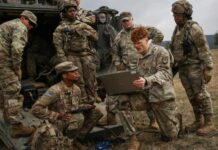You can take former defense secretary and retired four-star general James Mattis out of the Pentagon, but you can’t take his ideas out of the Navy.
The service’s senior operational aviator said on Wednesday he has established “north stars” for each of the Navy’s aircraft, a figure that represents what the air boss views as a satisfactory number of planes the service has ready for operations on any given day. In military lingo, the metric is also called a mission-capable rate.
Vice Adm. Kenneth Whitesell, commander of naval air forces, characterized putting the new measures in place as one of the “most significant things” naval aviation did last year. Whitesell did not state what the new mission capable rate targets are. Navy spokesman Cmdr. Zachary Harrell told Breaking Defense in a statement that the north star for the Super Hornet fleet was updated from 341 to 360, but declined to provide numbers for any other aircraft.
While it’s not a novel idea to have a certain number of weapons systems ready to go at a moment’s notice, the Navy’s “north stars” for figures in this case appear to be a direct consequence of a years-old initiative by Mattis. When he was defense secretary during the Trump administration, he tasked the services with achieving 80% mission-capable rates for their strike fighter fleets.
That goal prompted former air boss Vice Adm. DeWolfe Miller to work with then-Navy Secretary Richard Spencer on the “Naval Sustainment Strategy — Aviation,” an overarching project aimed at improving the Navy’s maintenance practices and, in turn, aircraft readiness.
Mattis’ challenge to the services lost steam after he resigned in late 2018, but the NSS-A has remained in place and was successful enough to prompt a spin-off focused on ship repair.
Now, according to Whitesell, the service has established these minimums for every aircraft in the fleet and “the money has to follow those north stars.”
During the West 2022 conference in San Diego, Whitesell said the metric gives “me a lower control limit … we have business rules to get back to the north star mission-capability rate and the mission-capability rating ensures that I’ve got platforms that can go forward and satisfy at least one mission that is primary or secondary to that platform.”
While just one metric, the north stars that Whitesell described should help paint a much clearer picture of naval aviation’s progress to senior Pentagon leaders and lawmakers privy to the hard numbers. The number seems to rely on a minimum number of aircraft ready to fight rather than the percentage of planes available.
Aircraft availability over the past two decades has generally taken a turn for the worse, as the Congressional Budget Office reported earlier this year, though the report noted the CBO and the Pentagon use different metrics to calculate availability.
With that in mind, CBO found aircraft availability rates “declined in both the Air Force and [Navy], but the decline was more marked” for the Navy, largely driven by a decline in legacy Hornets.










































